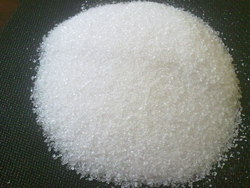In many areas of industry, drying agents serve an important function that makes everyday tasks a lot easier. Drying agents are substances that help control moisture or humidity by way of their water absorbing properties. Drying agents can be classified into two major categories depending on how they react:
In this drying process, the water in the material to be dried typically escapes as water vapor from the material’s surface. This water vapor is subsequently absorbed by the desiccant’s surface.
Back to Top
- chemically acting
- physically acting
Two types of drying agents
Drying agents that fall under the chemically acting category work by binding water molecules into its crystallized form. Many of these types of drying agents can be regenerated into their previous absorbent state simply by warming them. Some of the most common types of chemically acting drying agents are:- calcium chloride
- sodium sulfate
- magnesium perchlorate
- phosphorus pentoxide
- sicacide
- metals
- metal hydrides
Drying agents for gases?
Drying agents can be used for drying gases in a process wherein the gas is passed through large amounts of desiccant material. When used for this specific application, the drying agent typically comes in tube, tower, or column form.Procedure for drying solids
Although solids can be dried through a process of heating at high temperatures, using a drying agent may be a more effective and gentler process. For drying purposes, the material to be dried is typically placed in a desiccator vessel along with a quantity of physically acting drying agent. The chamber may also be subjected to a vacuum process in order to speed up the drying process.In this drying process, the water in the material to be dried typically escapes as water vapor from the material’s surface. This water vapor is subsequently absorbed by the desiccant’s surface.
Procedure for drying liquids
For purposes of drying liquids, a certain amount of drying agent is added to the solution. This solution is then mixed thoroughly and left to leave the liquid to reflux. The drying agent will then settle to the bottom of the drying vessel after a few minutes. In order to separate the components of the solution, decantation, suction filtration, or distillation processes may be applied. These processes are particularly useful when the solution forms compounds because of the reaction of the water with the drying agent. Distillation may also be useful when compounds are dissolved in the solvent.Back to Top
Drying Agent

Drying Agent Resources
Sponsored Links
